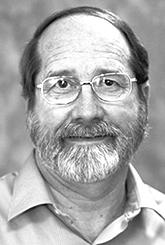Two miracles — the incarnation of Christ and his bodily resurrection — lie at the foundation of the Christian faith. Modern denials of the resurrection generally result from a naturalistic worldview, not from careful examination of the evidence. The naturalist’s objection is that it simply is unbelievable that a man could be raised from the dead. Christians in all ages have agreed that the resurrection of an ordinary man would indeed be unbelievable. But when one considers the context of Jesus’ extraordinary life and public ministry, one realizes that Jesus was no ordinary man. His life and ministry, along with the historical evidence for his resurrection, ground the believer’s conviction of this historical event.
When Jesus was laid in the tomb, the disciples were bewildered and their hopes were dashed. Some 50 days later, they were filled with joy and excitement, proclaiming the good news of his resurrection. Beyond question, the disciples sincerely believed that, after being crucified, dead and buried, Christ rose from the tomb. Only one explanation for this belief is plausible: the overwhelming evidence for the resurrection. Several lines of evidence support the historicity of this event.
One line of evidence is that all four Gospels report that on the Sunday after his crucifixion, Jesus’ tomb was found empty by several women, Peter, and another disciple (likely, John). Most New Testament scholars agree that the once-occupied tomb was empty that morning. The accuracy of the gospel accounts is supported by the fact that women were the first to discover the empty tomb. A story concocted by the disciples would not have granted such a prominent role to women.
The Romans did not deny that the tomb was empty, although it was to their advantage to do so. They could have immediately squelched Christianity by demonstrating that Christ’s body was secure in the tomb. Thus, they were compelled to provide an explanation for the empty tomb. Those guarding the tomb were instructed to claim that Jesus’ disciples had stolen the body while the guards slept (Matthew 28:12-13). (One cannot help but wonder how the guards would have known the body was stolen if they were asleep at the time.) That Jesus was no longer in the tomb was the first of many evidences upon which his followers believed in his resurrection.
Another line of evidence supporting the resurrection was that after his death, Jesus appeared to hundreds of people under different circumstances at various times and places, bearing the physical marks of crucifixion on his body. Moreover, Jesus did not appear only to believers, but appeared to his half-brother James, who was not a believer at the time, and to Saul of Tarsus, who was adamant in his unbelief. Later, in writing to the Church at Corinth, this same Saul (later called Paul) noted that Jesus once appeared to around 500 people on one occasion. As if to invite skeptics to search out those who had seen the risen Christ, Paul noted that many of those witnesses were still alive (1 Corinthians 15:5-7). Early believers were convinced of Jesus’ resurrection because many people had seen him with their own eyes.
A third line of evidence for the resurrection of Jesus is the personal transformation of his disciples. The book of Acts describes the transformation of these terrified and cowardly men into bold proclaimers of a message of salvation through the risen Jesus. Peter is an excellent example. At Christ’s crucifixion, Peter was so cowardly that he denied before a mere citizen that he even knew Jesus. After experiencing the resurrected Jesus, Peter shed his fears, charging some of the very people responsible for Jesus’ death with having crucified the Lord (Acts 2:23). Shortly thereafter, he defied the authorities who threatened him with death if he continued to preach Christ. Peter’s response explains his newly found boldness: “We cannot help but speak of what we have seen and heard” (Acts 4:20). Seeing the resurrected Lord transformed Peter, along with many other early believers.
The most plausible explanation for these evidences is that Jesus was indeed raised from the dead. This explanation passes the major tests that historians use to determine which hypothesis best explains pertinent data. Such tests include, among other things, explanatory scope and power. To be sure, through the centuries skeptics have suggested various alternative explanations for the data, but each alternative fails to explain one or more of the known facts. For example, that the disciples stole the body is refuted by the fact that merely producing the dead body of Jesus would have silenced the claim. That the supposed eyewitnesses were hallucinating is refuted in that Jesus appeared to many people at the same time, and the witnesses agreed in the details of their experience. Such alternative explanations have been rejected universally by contemporary scholarship.
There is much truth in the hymn that says, “You ask me how I know he lives; he lives within my heart.” Certainly, personal experience of the risen Christ brings assurance to the believer. But that is not the whole truth. The believer knows that Jesus lives also because the inerrant Word of God declares it and the objective evidence supports the fact. Paul testified to Festus and King Agrippa concerning this evidence for the resurrection of Jesus: “I am not insane, most excellent Festus,” Paul replied. “What I am saying is true and reasonable. The king [Agrippa] is familiar with these things, and I can speak freely to him. I am convinced that none of this has escaped his notice, because it was not done in a corner” (Acts 26:26).
The naturalist, disregarding the evidence, insists that it is impossible that Jesus rose from the dead. In light of Christ’s life and ministry, and the overwhelming evidence, the apostle Peter claimed the very opposite: “It was not possible that death could keep its hold on him” (Acts 2:24).
— Walter Johnson is dean of the College of Christian Studies at North Greenville University.

